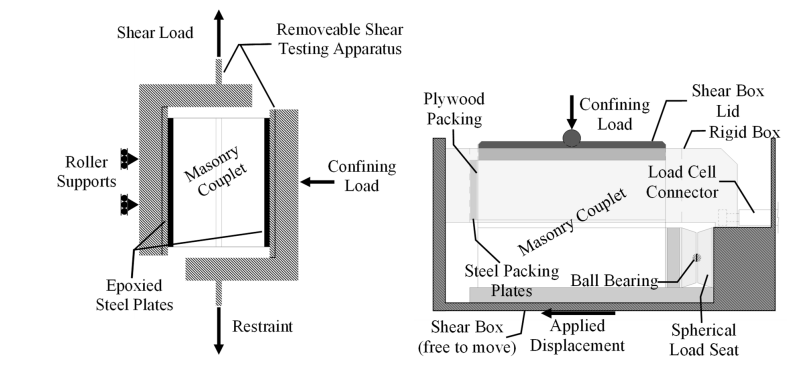Lewis J. Gooch, Mark J. Masia, Mark G. Stewart, and Michele Spadari
i Research Associate, The University of Newcastle, Callaghan, Australia, & University of Technology Sydney, Ultimo, Australia, lewis.gooch@newcastle.edu.au
ii Professor, The University of Newcastle, Callaghan, Australia, mark.masia@newcastle.edu.au
iii Distinguished Professor, University of Technology Sydney, Ultimo, Australia, mark.stewart@uts.edu.au
iv Senior Technical Officer, The University of Newcastle, Callaghan, Australia, michele.spadari@newcastle.edu.au
ABSTRACT
The frictional resistance along a shear plane contributes significantly to the load carrying capacity of masonry structures, particularly those loaded under in-plane lateral forces. This resistance is typically defined simply in terms of a shear-friction coefficient. This property ranges significantly in the literature, with values observed from as low as 0.25 to greater than 1.0 for unreinforced clay-brick masonry. Despite this degree of uncertainty, few studies consider the variability of the shear-friction resistance. This limitation is particularly relevant to structural reliability-based analyses, where the result is highly dependent upon assumed variability of strength defining material parameters. This manuscript presents the findings of a laboratory investigation of the statistics of this shear-friction behaviour through the application of repeat testing of nominally identical specimens. Five distinct clay-brick masonry unit types (three extruded, perforated units, and two pressed, solid units) were utilised, with an Australian standard 1:1:6 (cement: lime: sand, by volume) mortar mix. Masonry couplets were constructed from these materials and were tested in shear under a constant vertical pre-compression. The data produced from these tests allowed for the determination of suitable statistical models to be developed to describe the variability of the shear-friction coefficient.
KEYWORDS: clay brick masonry, material characterisation, shear-friction, unreinforced, variability.
018-Gooch.pdf



